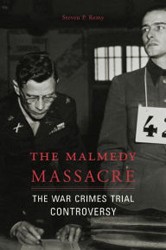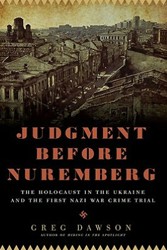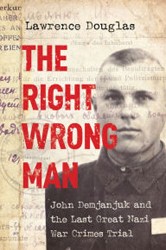By
– September 1, 2011
Many of us are aware of the Nuremberg Trials of the 22 major Nazi war criminals which took place between October 1945 and October 1946. Less familiar is the subsequent twelve additional secondary trials that took place under the jurisdiction of the Allies. The Witness House offers the reader a glimpse of the trials from the perspective of the perpetrators, witnesses, surviving members of the Nazi Resistance, as well as victims of the Nazi concentration camps, all of whom were housed by the American army in the Novalisstrasse villa, not far from where the trials took place.
Christiane Kohl, a German correspondent and a former editor of Der Spiegel, among her many other professional accomplishments, has written a fascinating record of the conversations and insights about Nazi Germany and the Holocaust that emerged from the discourse that took place between perpetrators and victims sharing meals and conversation together in the villa as they awaited calls from the defense or prosecution for their testimony.
Drawing on interviews, primary source materials, and recently disclosed documents, Kohl introduces a cast of characters who, if not actually real participants in the events described, would seem to be the product of a work of fiction. Presiding over the villa was the beautiful Countess Ingeborg Kalinosky, who is described as a Jean Harlow look-alike. Given the potential for incivility among the “guests,” she maintained decorum as well as order among the cohabitants, who easily could have continued their acrimony toward one another, thus turning the villa into a battleground.
Among the personalities who were interned or made their appearance in the villa were Heinrich Hoffmann, Hitler’s photographer, whose remorseless anecdotes about the Fùhrer illustrate just how unrepentant many of those who served the Third Reich were soon after their capture. The flamboyant Rudolph Diels, who organized the Gestapo for Hermann Goering, Karl Haushofer, the geo-politician who inspired Hitler’s policy of Lebensraum, Robert Havemann, a chemist and member of the Resistance to Hitler, Robert Kempner, the German Jewish prosecutor, Eugene Kogon, who would later write about the atrocities in Buchenwald, and Ernst von Weizsäcker, the German ambassador to the Vatican, are among many other historical personalities in this riveting book.
Christiane Kohl, a German correspondent and a former editor of Der Spiegel, among her many other professional accomplishments, has written a fascinating record of the conversations and insights about Nazi Germany and the Holocaust that emerged from the discourse that took place between perpetrators and victims sharing meals and conversation together in the villa as they awaited calls from the defense or prosecution for their testimony.
Drawing on interviews, primary source materials, and recently disclosed documents, Kohl introduces a cast of characters who, if not actually real participants in the events described, would seem to be the product of a work of fiction. Presiding over the villa was the beautiful Countess Ingeborg Kalinosky, who is described as a Jean Harlow look-alike. Given the potential for incivility among the “guests,” she maintained decorum as well as order among the cohabitants, who easily could have continued their acrimony toward one another, thus turning the villa into a battleground.
Among the personalities who were interned or made their appearance in the villa were Heinrich Hoffmann, Hitler’s photographer, whose remorseless anecdotes about the Fùhrer illustrate just how unrepentant many of those who served the Third Reich were soon after their capture. The flamboyant Rudolph Diels, who organized the Gestapo for Hermann Goering, Karl Haushofer, the geo-politician who inspired Hitler’s policy of Lebensraum, Robert Havemann, a chemist and member of the Resistance to Hitler, Robert Kempner, the German Jewish prosecutor, Eugene Kogon, who would later write about the atrocities in Buchenwald, and Ernst von Weizsäcker, the German ambassador to the Vatican, are among many other historical personalities in this riveting book.
Jack Fischel is professor emeritus of history at Millersville University, Millersville, PA and author of The Holocaust (Greenwood Press) and Historical Dictionary of the Holocaust (Rowman and Littlefield).





